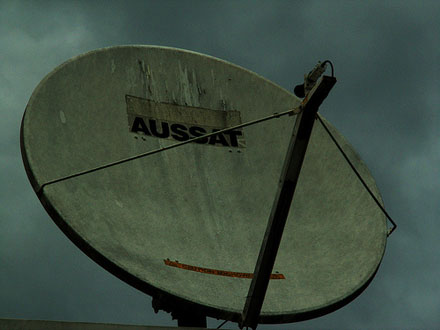NBN could repeat Aussat failure

Analysis from the Royal Bank of Scotland has likened the investment in the National Broadband Network to a satellite network the government invested in during the 80s, which former Prime Minister Paul Keating once described as a billion dollar piece of "space junk".
RBS analyst Ian Martin detailed similarities between the satellite investment Aussat and the National Broadband Network: both had a national roll-out plan; both saw government money invested and were presented as inspirational investments; both serviced high growth markets and paving the way for change; both had high start-up costs.
Like the National Broadband Network, considerations of protection also came into play with Aussat, and the government fully expected it to become a commercial, tax-paying enterprise, Martin said.
Yet by 1990/91, the company had cumulative losses of $152 million by late 1991 when it was sold, Martin said. The main issue according to Martin was debt financing, which had reached $800 million by 1991 as interest rates were hitting record highs. All up, by the time it had sold the project to Optus, the government had lost around $1 billion in debt and equity from its investment, Martin said.
Martin put the loss down to misplaced optimism around a game changing technology. The industry which was supposed to have sprung up around the network did not, something he considered all together possible for the National Broadband Network.
The high start-up costs, high financing costs, disappointing revenue costs and restrictions around the network's allowable commercial activities which dogged Aussat would all also be risks for the new broadband network, he considered.
Optus general manager of regulatory Andrew Sheridan said that the argument was an interesting intellectual exercise, but that the circumstances were very, very different. Broadband was a very different prospect than the broadcast services, he believed, pointing to its growth and that it wasn't a project unique to Australia, as other nations tackled a broadband network too.
IDC telecommunications analyst David Cannon also said Aussat and the National Broadband Network were technically very different. Yet he agreed that it was possible the National Broadband Network could also become a loss leader which the network builder would want to get rid of as soon as possible.
He believed the business case was key: the builder needed to offer a service equal to that on Telstra's HFC (Hybrid Fibre Coaxial) network but for a lower price.
"In order to protect the business model you've got to make legislative changes," he said. "Those legislative changes will be fairly extreme." They would go against democratic and capitalist values, he said.
Martin had detailed which changes he thought were necessary, including legislation for protection of the NBN builder's investment; possible legislation to separate Telstra; a declaration by the ACCC for shared duct and trench access; legislation to override state, territory and council regulations over planning and heritage; as well as legislative change to allow sub-loop unbundling of all lines at the pillar. He believed Telstra could claim compensation for some of the changes.
It wasn't going to be easy, Cannon agreed, with Telstra likely to fight tooth and nail, but he believed broadband was a social issue, and that the network had to be attempted if it wasn't going to be held for ransom as it was when Telstra delayed turning on its ADSL2+ enabled exchanges.
"There are risks understandably as with any investment," Optus' Sheridan said.
